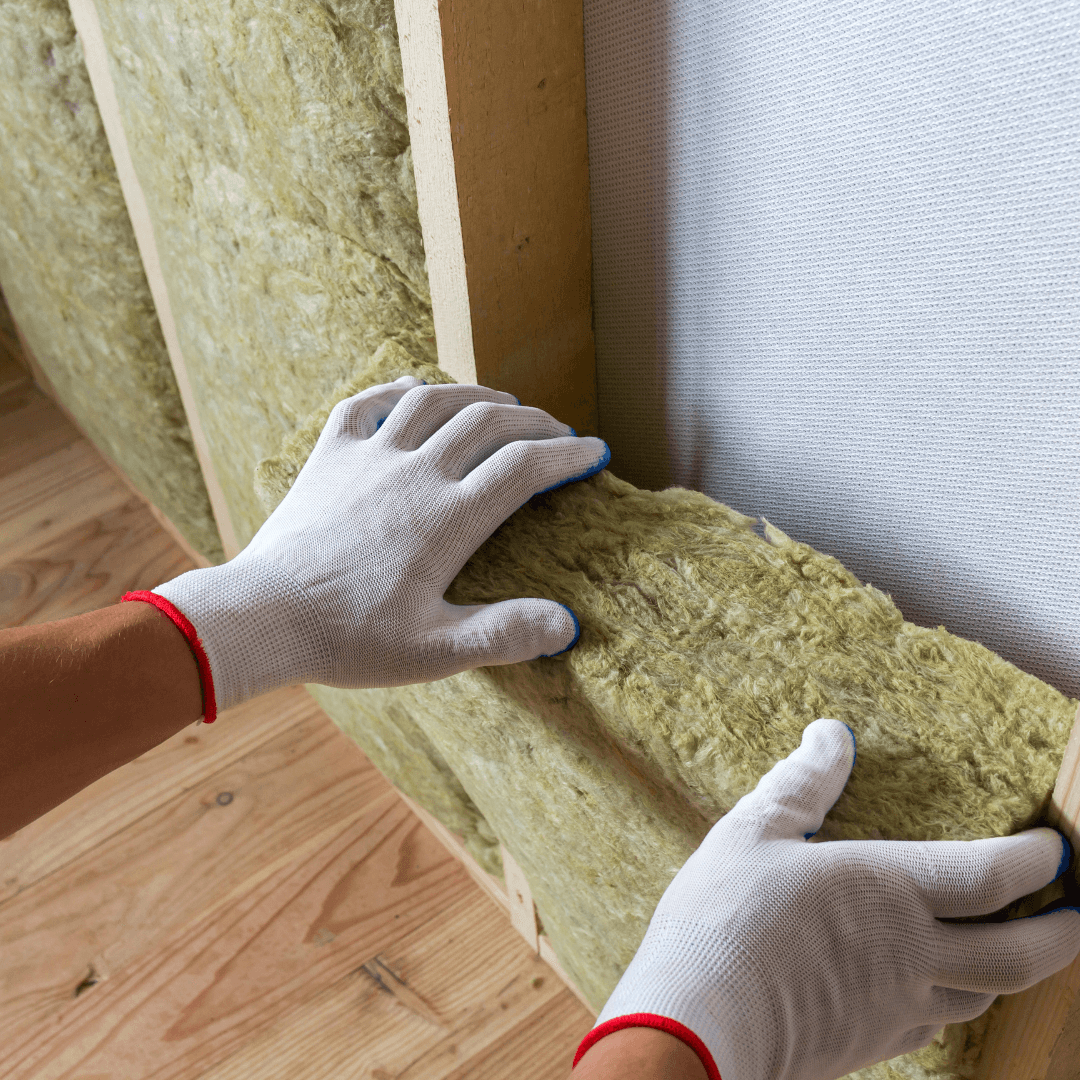
If your home feels too cold in winter or too hot in summer, your walls might be the culprit. They let the warmth escape when it’s chilly and let the heat sneak in when it’s scorching; as a result, your energy bills go up.
The fix? Internal wall insulation.
This insulation protects your walls, prevents warmth from escaping in winter and keeps the heat out during summer — an energy-efficient game-changer. It comforts your home and saves you money by reducing the strain on your heating and cooling systems.
In this guide, we’ll talk about internal wall insulation — what it is, how it works, and the benefits you can enjoy after using it. Moreover, we’ll explore various options to suit your needs and budget and share information on schemes that could make your internal wall insulation a cost-free solution.
What is Internal Wall Insulation?
Internal wall insulation involves adding insulation material to the inside surface of external walls and partition walls, aiming to enhance the thermal performance of a building.
Internal wall insulation panels are commonly used to enhance the thermal performance of buildings. These panels are designed to be applied directly to the interior wall insulation paint of external or partition walls, providing an additional layer of insulation. This method is particularly popular for homes with solid walls that don’t allow for external insulation. It’s a practical solution to improve the overall insulation of a structure without altering its external appearance.
How Does it Work?
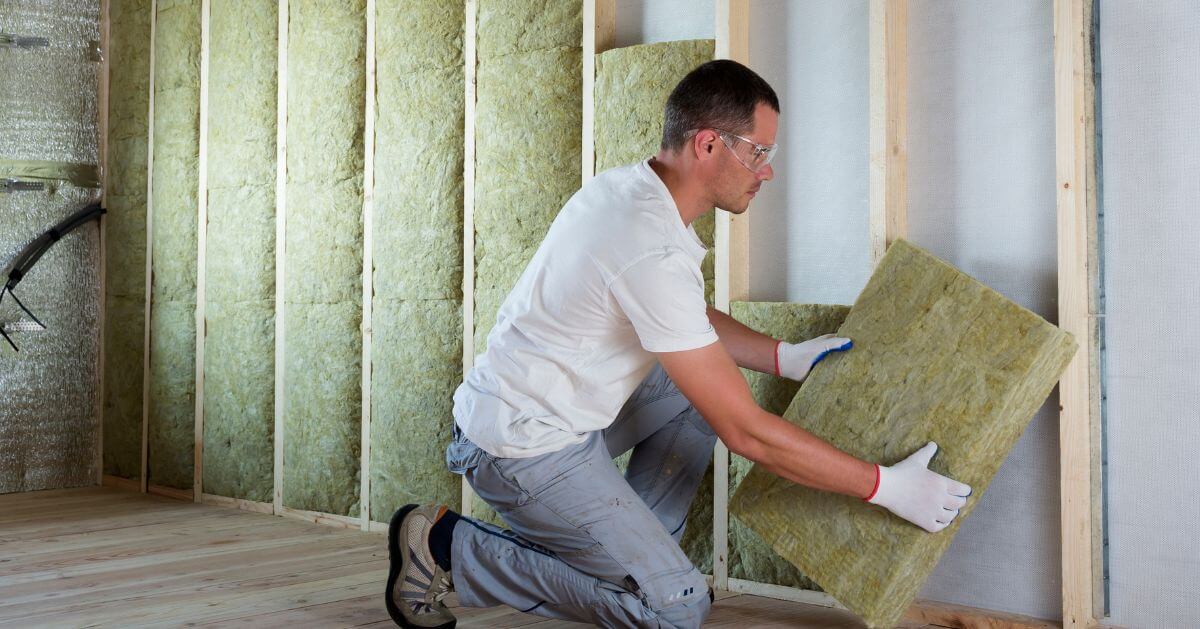
Internal wall insulation introduces a layer of insulating material to the inner surface of external or partition walls. This layer acts as a barrier that hinders the transfer of heat between the interior and exterior of your home. Here’s how it is achieved:
Reducing Heat Loss in Winter:
- The insulating layer traps the warm air inside your home, preventing it from escaping through the walls.
- Heat loss reduction helps maintain a more consistent indoor temperature during colder months.
Minimizing Heat Gain in Summer:
- During hot weather, the insulation restricts the entry of external heat into your home.
- It prevents your living space from becoming excessively warm, reducing the need for air conditioning and improving overall comfort.
Materials for Internal Wall Insulation
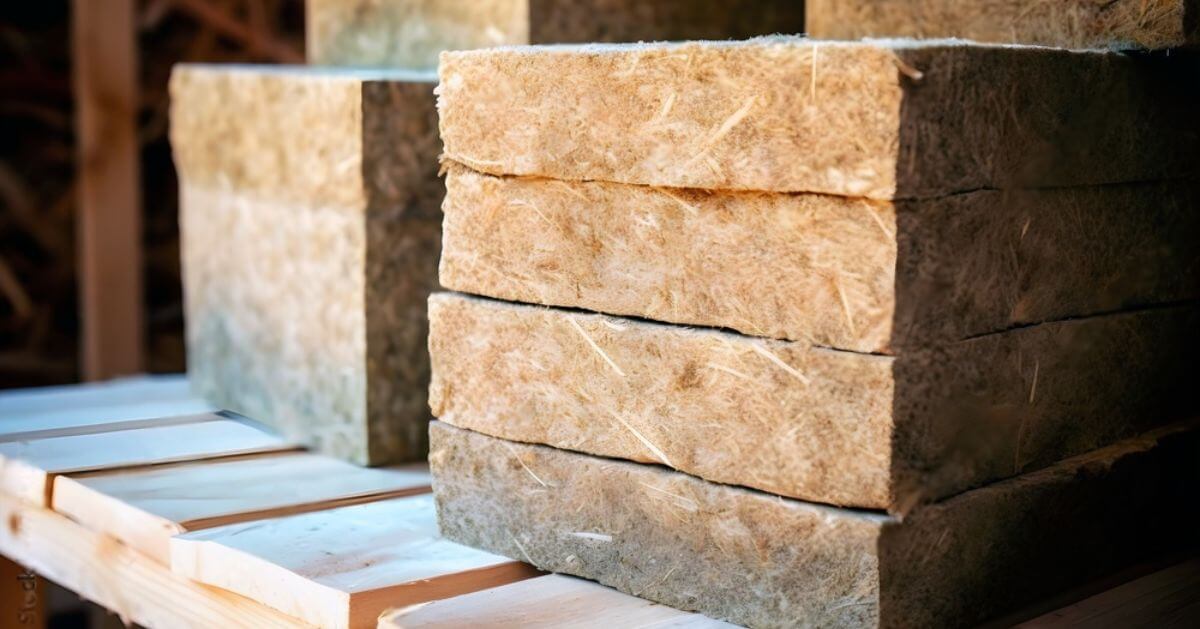
Multiple types of materials are used for internal wall insulation, each offering specific properties to enhance thermal performance. Some of the common materials are:
Rigid Foam Boards:
- Polystyrene: Effective insulation with good thermal resistance.
- Polyurethane: Provides excellent insulation in a thinner profile.
Mineral Wool:
- Rock Wool (Mineral Wool): Offers fire resistance and sound insulation properties.
Fiberglass:
- Fiberglass Batts or Rolls: Easy to install and provide good thermal insulation.
Reflective Foil Insulation:
- Reflective Foil: Acts as a radiant barrier, reflecting heat away from the interior.
Spray Foam Insulation:
- Polyurethane Spray Foam: Expands to fill gaps, providing an airtight seal for effective insulation.
Natural Fiber Insulation:
- Cotton, Hemp, or Sheep’s Wool: Environmentally friendly options with good insulating properties.
The choice of material depends on multiple factors such as your insulation requirements, budget, environment, the method to be used, building structure, fire resistance and safety.
Why is it Important?
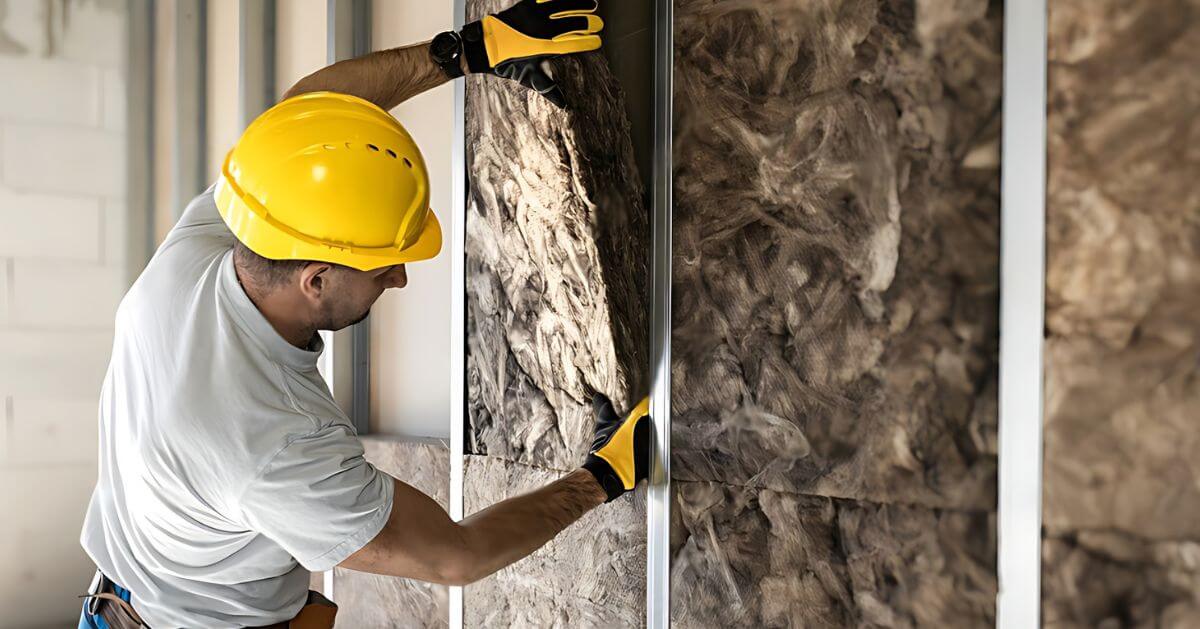
There are several reasons why Internal wall insulation is needed:
Improved Thermal Comfort:
- Warm in winter: Insulation helps retain heat inside your home, making it warmer and more comfortable during the cold months. It reduces your reliance on heating systems and creates a more inviting environment.
- Cool in summer: Insulation also prevents heat from entering your home during the warmer months, keeping it cooler and reducing the need for air conditioning. This can significantly improve your comfort and reduce your energy bills.
Reduced Energy Bills:
- Lower energy consumption: By keeping your home warm in winter and cool in summer, internal wall insulation helps you use less energy for heating and cooling. This can lead to substantial savings on your energy bills over time, making it a cost-effective investment.
- Increased energy efficiency: Insulation improves your home’s overall energy efficiency by reducing heat transfer through the walls. This makes your home more environmentally friendly and contributes to sustainable living practices.
Reduced Noise Pollution:
- Soundproofing: It can act as a sound barrier, absorbing sound waves and reducing noise pollution. This can create a more peaceful and quieter living environment, which is especially beneficial in noisy urban areas or busy households.
Improved Air Quality:
- Reduced moisture and dampness: By reducing heat loss through the walls, internal wall insulation helps prevent dampness and condensation. This can improve air quality within your home, reducing the risk of respiratory problems and creating a healthier living environment.
- Reduced mold growth: Mold thrives in damp environments. By preventing moisture buildup, internal wall insulation can help prevent mould growth, which can harm your health.
Increased Property Value:
- Energy-efficient homes: Homes with good insulation are more attractive to potential buyers and often command higher market values. If you plan to sell your house, internal wall insulation can be valuable.
Read more: Guide to Qualify for UK Solar Panel Grants
Types of Internal Wall Insulation
There are several types of internal wall insulation, each with its advantages and disadvantages. Here are the most common internal wall insulation options:
Rigid Insulation Boards:
- Available in various materials and thicknesses, these boards offer different energy-saving properties. Some types come with pre-attached plasterboard for a simpler installation process.
Stud Frames with Infill:
- Wooden or metal stud frames are affixed to the walls, with insulation placed between them and plasterboard laid over the top. Materials like mineral wool, sheep’s wool, wood fiber, hemp, and recycled bottles can be used. This method allows for attaching heavier items like bookcases or kitchen cupboards to the battens, making it suitable for rough and uneven walls.
Flexible Thermal Lining:
- Presented in rolls similar to thick wallpaper, the flexible thermal lining is glued to the wall using a special adhesive. While it may not provide the same level of insulation, it’s DIY-friendly and suitable for smaller rooms due to its limited thickness (usually no more than 10mm).
Insulated Plaster:
- A blend of plaster and insulating materials, such as cork, this mixture can be troweled or sprayed onto walls. Ideal for uneven surfaces, it contributes to good levels of airtightness in addition to providing insulation.
Building Regulations in the UK
In the UK, specific Building Regulations apply to internal wall insulation. These regulations establish essential airtightness and heat loss standards, ensuring compliance in homes undergoing internal wall insulation projects. The U value, indicating the rate of heat loss per square meter, is a key factor in meeting these standards.
For various internal wall insulation types, such as uninsulted cavity walls, solid 225mm brick walls, and solid stone walls, specific U values are outlined. Current Building Regulations for internal wall insulation in the UK mandate a maximum U value of 0.3W/m², with a realistic target of 0.2W/m² for internal wall insulation.
Cost of Internal Wall Insulation
The overall expense depends on the number of rooms undergoing renovation and the chosen insulation type. Internal wall insulation for solid walls tends to be more budget-friendly than external insulation due to lower material and labour costs.
The installation cost for internal solid wall insulation in an average 3-bedroom, semi-detached house is approximately £8,500.
Savings and Benefits
For homes utilising gas heating, the potential annual savings on heating bills are estimated to be around £475 for a semi-detached house and approximately £603 for a detached house.
These figures are based on data from the Energy Saving Trust and the National Housing Model.
Free Internal Wall Insulation with ECO4
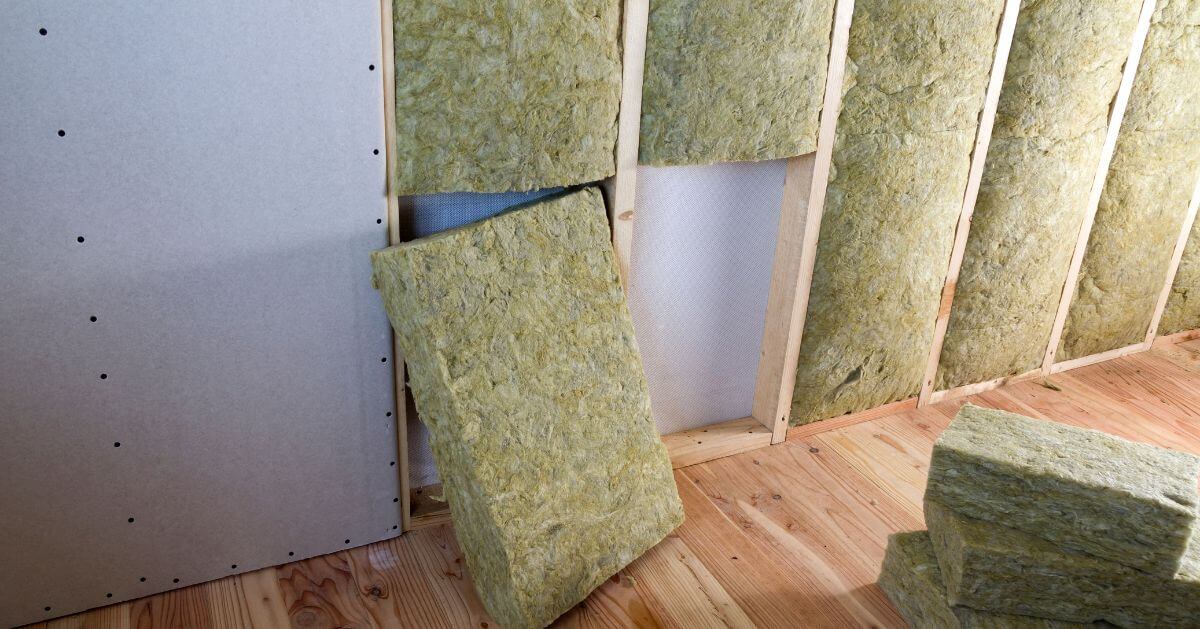
While internal wall insulation is an effective means of saving on energy costs, it can be expensive. The government has introduced several schemes, one of the most significant being ECO 4.
This initiative aims to make the benefits of internal wall insulation accessible to a wide range of individuals. Financial coverage under these schemes is substantial, with almost 100% assistance provided, allowing many people to take advantage of this energy-saving solution without incurring significant costs.
ECO4:
The Energy Company Obligation (ECO4) is a UK government initiative that aims to improve the energy efficiency of homes across the country. It requires energy companies to deliver energy-saving measures to households, including installing internal wall insulation system. The essential eligibility criteria are:
- Location: Your property must be located in England, Scotland, or Wales.
- Property type: The scheme is available for homes and private rented properties.
- Energy performance certificate (EPC): Your home must have an EPC rating of D, E, F, or G.
How S6 Energy Can Help
S6 Energy is committed to assisting you in accessing ECO4 for free internal wall insulation by visiting your premises and getting an internal wall insulation diagram ready. Our dedicated team will guide you through the application process, ensuring that you meet the necessary criteria for eligibility in this government initiative. Using our experience, we aim to streamline the steps required to access ECO4 benefits, making the process smoother and more accessible. It’s important to note that our guidance and assistance throughout this process are free of cost.
Contact S6 Energy today to check your eligibility and apply hassle-free.
Frequently Asked Questions (FAQs) About Internal Wall Insulation
- How much can internal wall insulation save on energy bills?
Potential annual savings for homes with gas heating are estimated at around £475 for a semi-detached house and £603 for a detached house.
- What is the typical thickness of rigid foam boards for internal wall insulation?
The thickness of rigid foam boards can vary, but standard internal wall insulation options range from 25mm to 100mm, depending on the insulation requirements and specific material characteristics.
- Are there specific considerations for installing internal wall insulation in older homes with irregular wall surfaces?
Yes, for irregular surfaces, flexible thermal lining or insulated plaster can be more suitable, adapting to the contours of the walls. Stud frames with infill may also be used to address unevenness.
- How does reflective foil insulation contribute to energy efficiency?
The reflective foil is a radiant barrier, reflecting heat away from the interior. This helps minimize heat gain in summer, reducing the need for cooling systems and contributing to overall energy efficiency.
- Can I install internal wall insulation, or should I hire a professional?
While some insulation materials are DIY-friendly, the installation process’s complexity and your home’s specific requirements may necessitate professional assistance. It’s recommended to consult with experts for optimal results.


